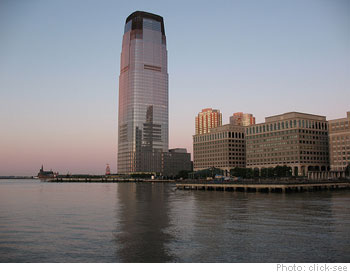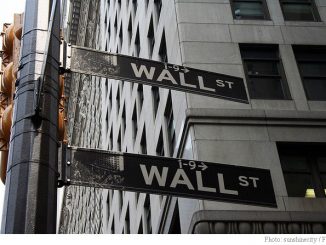 I hate to join the pile-on against Goldman Sachs (GS), the Wall Street firm that everybody loves to hate. But items like this make me want to pull out my hair in frustration.
I hate to join the pile-on against Goldman Sachs (GS), the Wall Street firm that everybody loves to hate. But items like this make me want to pull out my hair in frustration.
The Financial Times reports tonight that Goldman has apparently won part of the mandate to manage the initial public offering of AIG’s Asian life insurance unit — AIA — in Hong Kong. The offering is expected to be for $10 billion or more, and Goldman will be one of seven investment banks to sell it.
As far as I know, Goldman didn’t do anything improper to get this deal. It’s a big IPO, Goldman is a top player in the league tables and this is one of its core competencies.
But still. Goldman Sachs, more than any other firm on Wall Street, has managed to profit on almost every angle of the biggest single trainwreck (AIG) in the biggest financial crisis this country has ever seen.
Goldman, for all its blue-blood highmindedness, was an enthusiastic bundler and securitizer of godawful subprime mortgages from the most notorious lenders in the country — Fremont, New Century, just about any lender that wasn’t totally controlled by one of Goldman’s rivals on Wall Street.
Goldman wasn’t alone, of course. It probably wasn’t the worst. But what set it apart was its decision around late 2006 to start hedging its exposure in the subprime market. Even as it was selling subprime mortgage-backed securities, it was ramping up its bet on a downturn by loading up on credit-default swaps — insurance against the falling value of subprime securities. A lot of that protection, of course, came from AIG.
As Gretchen Morgenson and Louise Story recounted in the New York Times, Goldman began pushing AIG hard by early 2008 to post big margin payments, arguing that the value of the securities had fallen sharply.
When AIG became completely insolvent in September 2008, mainly because of its huge obligations to make good on all its mortgage-related credit-default swaps, the Federal Reserve and Treasury had to provide $180 billion in loans, credit lines and asset purchases to keep AIG from collapsing and causing a complete meltdown of the entire financial system.
In November, Fed officials in Washington and New York had to put up $62 billion to buy up collateralized debt obligations that AIG had insured. These CDO’s amounted to the second stage of Wall Street’s alchemy for turning junk mortgages into AAA securities. The so-called “mezzanine CDO’s” pooled the riskiest tranches of securitizations that were lready based on the riskiest mortgages ever made in U.S. history.
Goldman held $12 billion worth of those CDO’s. And in an intensely controversial decision, Fed officials ultimately paid Goldman and the other big banks 100 cents on the dollar for their CDO’s.
All this was happening, of course, at the same time that Goldman was being propped up with TARP money from the Treasury, staggering volumes of federal guarantees under the FDIC’s Temporarly Liquidity Guaranty Program and access to dirt-cheap financing from the Fed.
Goldman earned record profit in 2009, paid out almost as much in bonuses as it did in 2007, and is now stronger than ever. Oh yes, it’s also now a bank holding company and thus permanently eligible to borrow directly from the Fed’s discount window if it gets in trouble again.
I am not one of those who argue that Goldman Sachs caused the collapse of AIG. But this just seems like playing too many angles at the same time.
Goldman executives recognized that the subprime market was in big trouble, but managed to limit their risk by shorting the market even as they stayed in the game.
Goldman was a part of the mortgage melee, and its aggressive stance toward AIG almost certainly made the insurance company’s problems even worse. Somehow, Goldman managed to get billions back from AIG (make that from taxpayers) at the same time that it was getting all manner of direct and indirect help from the government.
Now AIG is a ward of the state and trying to sell off many of its most valuable assets in order to repay the federal government. And here is Goldman Sachs, once again poised to earn another healthy commission, this time for helping with AIG’s dismemberment.
- Bulenox: Get 45% to 91% OFF ... Use Discount Code: UNO
- Risk Our Money Not Yours | Get 50% to 90% OFF ... Use Discount Code: MMBVBKSM
Disclaimer: This page contains affiliate links. If you choose to make a purchase after clicking a link, we may receive a commission at no additional cost to you. Thank you for your support!




Who let Goldman and Morgan become bank holding companies?
Who lent out trillions secretly to unknown banks?
Who allowed GMAC into TLGP but not CIT?
UNELECTED OFFICIALS.
So what in the world were our elected representatives doing besides watching?
*imho*
Goldman is always on the news, but most mainstream media ignored what our UNELECTED financial regulators have been doing to the smaller banks. They might not be TBTF for the nation, for they were certainly TBTF for the local communities.
Charter Bank, New Mexico:
“‘This is as absolute a heinous crime as there is. They stole that bank – the government stole that bank from its rightful owners,’ said Parnegg, CEO of Coldwell Banker Legacy, the largest residential real estate firm in New Mexico.”
http://albuquerque.bizjournals.com/albuquerque/stories/2010/02/08/story3.html
“The federal Office of Thrift Supervision (OTS) closed family-owned Charter Bank in New Mexico on Friday afternoon and handed it to the Federal Deposit Insurance Corporation (FDIC), which gave it to Beal Financial Corporation of Plano, Texas. The FDIC said all bank branches would reopen on Monday under Beal’s ownership.
The closure was a surprise because the bank was not having problems, except with its regulators.
Last fall, Office of Thrift Supervision examiners, responding to the national collapse of real estate development, ordered Charter to increase its allowance for loan losses from $10.8 million to $55.4 million, even though Charter had no delinquent commercial construction loans and only .34 percent of the loans in its commercial real estate portfolio were behind on their payments. That order reduced the level of capital Charter had on its books.
Then, last Wednesday, ‘OTS ordered Charter to find new capital as a buffer against insolvency or face closure.’ That order was followed by OTS’ closing the bank just two days later.”
gdcritter.blogspot.com/2010/01/regulators-take-untroubled-bank-from.html
FIRST BANK OF IDAHO/ COST TO FDIC: $191.2 MILLION:
http://www.fdic.gov/news/news/press/2009/pr0906...
“U.S. Reps. Mike Simpson and Walt Minnick sent letters Friday to the heads of the Federal Deposit Insurance Corp. and the Office of Thrift Supervision, asking for information about the decision to close the First Bank of Idaho… OTS gave the bank until June 30 to raise $10 million and bring its capital level to 12 percent. But regulators moved to shut down the bank before that June deadline, shocking bank executives who contend they had investors lined up to give the bank a cash infusion and clear millions in bad loans… On April 24, the OTS appointed the FDIC receiver of the bank, and more than 60 FDIC officials seized it. US Bank officials moved in that same day.”
http://www.idahostatesman.com/business/story/762575.html
SAN JOAQUIN BANK/ COST TO FDIC: $103 MILLION:
fdic.gov/news/news/press/2009/pr09185.html
” Elation over the last-minute rescue of San Joaquin Bank halted with the ring of a cell phone at 3:11 p.m. on Oct. 16… Even among those closest to the situation, the decision to shut down the bank came as something of a surprise. They had been told that the banking commissioner had extended a deadline that officially passed the night before, on Oct. 15, and that if the $27 million goal could be met by the end of the next business day, San Joaquin would be spared… New investments topped the $27 million mark that Friday afternoon.”
finreg21.com/news/san-joaquin-banks-fina…
FBOP/ COST TO FDIC: $2.5 BILLION:
fdic.gov/news/news/press/2009/pr09195.html
“Park National Bank didn’t fail. It was ambushed… Park National Bank – days from closing on the $600 million in private capital that the FDIC demanded be raised – is dead. Simultaneously, the FDIC is handing over to another bank a reported $2.5 billion to take on Park National’s assets.”
http://wednesdayjournalonline.com/Main.asp?SectionID=1&ArticleID=15873
*imho*